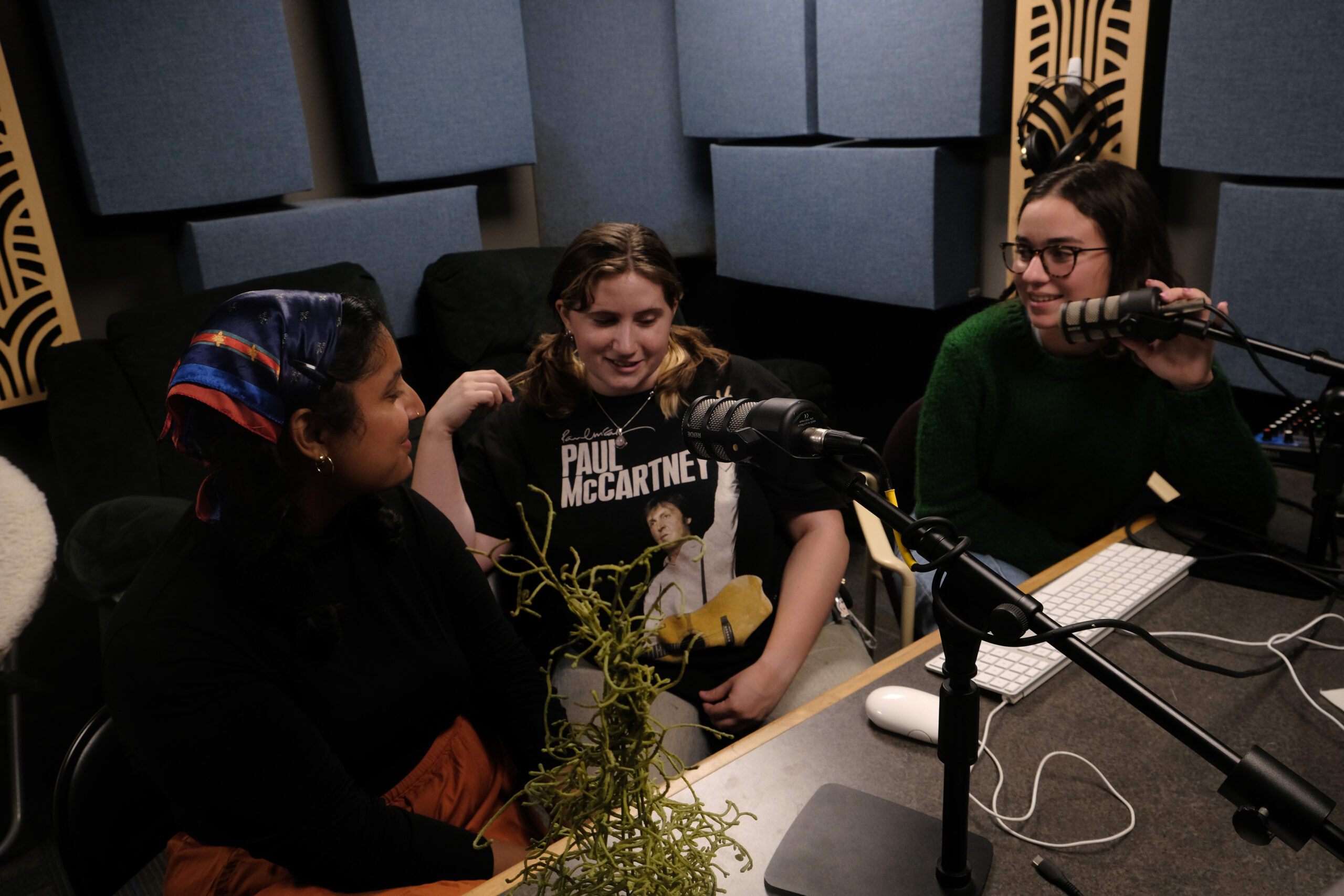Since 1923, students have been broadcasting live from Haverford College’s radio station, WHRC. Originally named WBAQ, it was one of the first AM radio stations in the United States and was created by the Haverford Radio Club, who broadcasted live musical performances, lectures, speeches, and more to listeners on campus and off.
Eve Pennington HC ‘25 is one of the co-heads of Haverford’s radio station and has been involved with the radio station for the past three years. She says WHRC has a “wide breadth of shows this semester” and that “people are showcasing all their different passions through their shows.” On the fall schedule there are 39 radio shows and podcasts broadcasted throughout the week. Pennington says that even with the hefty schedule this semester, they always have room for more: “We love to be able to fill all of the time with people being actively on air.” In addition to having more radio shows in general, Pennington hopes to get even more people listening and thrilled about the radio. “We want to create more of a community surrounding WHRC,” she says.

WHRC has already hosted a few events since the beginning of the academic year, including a talk on Haverford College and the Early History of College Radio for College Radio Day. The talk was given on Oct. 4 in Lutnick 232 by Gest Fellow Jennifer Waits, a Haverford College alum who was a DJ for WHRC for three years, from 1986 until 1989. She is a writer, podcaster, and college radio historian who has written about Haverford’s radio station on her blog SpinningIndie, as well as the website Radio Survivor, which she co-founded.
In addition to the talk, WHRC held a screening of the film 35000 Watts: The Story of College Radio on Oct. 9th in Haverford’s Visual Culture, Arts, and Media facility (VCAM), where Waits, who was featured in the film, was also present to speak with students.
Pennington says that the film was really inspired the co-head WHRC board members to think about what they’re prioritizing and archiving. They hope to start printing out some of their posters and give them to special collections so that, “someone will be able to look back at what was happening at WHRC in 2023/2024,” Pennington explains.
Archival work is something the WHRC Board feels strongly about. Over the past century, Haverford’s radio station has gone through several periods of dormancy and revival, culminating in its current iteration as WHRC.
In the fall of 2022, after over 10 years of dormancy, WHRC was brought back by a group of students through funding from Haverford’s Student Arts Fund, overseen by the Hurford Center for the Arts and Humanities. With this relaunch, the radio station was moved to be broadcasted through radio.co, a streaming platform that allows students from the Bi-Co community to air their radio shows or podcasts live online. A Spotify playlist is automatically broadcasted during times when there is no scheduled programming so that the station is on air 24 hours a day.
This year, WHRC is focusing on listener engagement as their main ambition. Rather than simply listening for your friends’ shows, Pennington wants people to see it “more as a music source.” She describes how there were few options to listen to music beyond CDs in the 80s and 90s and radio was one of them. College radio allowed people to “break barriers and discover music that wasn’t necessarily on the mainstream radio,” Pennington adds. “[We’re] definitely doing that on WHRC”, she says. “We play a lot of out there music and people can find music they like that they’ve never heard before, [which is] really part of the beauty of radio.”
